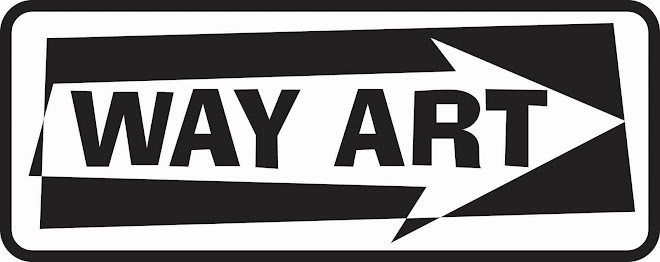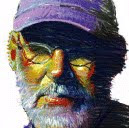 Joel Spector, a Way Art illustrator has what it takes.
Joel Spector, a Way Art illustrator has what it takes.
Yes! An awesome likeness and he nails it every time.
Known for his images of elegance, Joel Spector was born in Havana, Cuba, came to the United States at the age of twelve, and currently lives in New Milford, CT with his wife, Rowena and four children, Max, Ari, Jacob and Saskia. He graduated from Fashion Institute of Technology and attended the Art Student’s League.
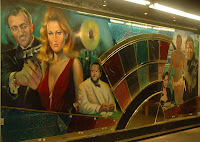 Joel started out in the field of fashion illustration then moved on to general illustration and has been working on well-known accounts throughout the years. His work has been published in books, children’s books, magazines, newspapers, advertising and annual reports.
Joel started out in the field of fashion illustration then moved on to general illustration and has been working on well-known accounts throughout the years. His work has been published in books, children’s books, magazines, newspapers, advertising and annual reports.
Honors include Gold Medal awards from the Pastel Society of America, Society of Illustrators award, and Best in Show at the Kent Art Association. His work has been featured in Artist’s Magazine, Pastels International, Best of Pastels, and various international magazines. Japanese television produced a documentary showing his vibrant and methodical illustration process. Presently working on murals in addition to illustration, Joel is sought out to paint commissioned portraits and his work has been included in many prominent collections. He has taught a FIT, Wooster Community Center for the Arts and is currently at Western Connecticut State University.
Way Art: In your opinion, what’s the hardest thing about drawing a likeness? What’s the
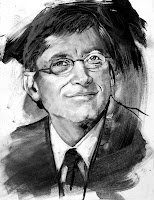 easiest?
easiest?
Joel Spector: The portrait painter John Singer Sargent once described a portrait as “a painting where the mouth is never quite right”. The concept of “likeness” is interpretive. There is nothing easy about achieving a likeness, some artists have the ability to capture the spirit of a person and some cannot.
WA: What if you have to draw a celebrity from a certain angle and you can’t find reference.
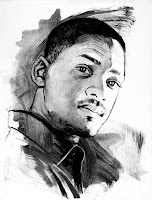
JS: I can usually do my own research through movies or
concerts they’ve made. I can find certain angles and even if the quality is not quite ideal and it’s usually enough for me to make it work.

 WA: What do you do when the reference is not good?
WA: What do you do when the reference is not good?
 JS: The ideal solution is to photograph the subject myself. In the past I’ve received from client’s poor quality reference when nothing else was available and so I relied on my abilities as best I could to capture the essence of that person.
JS: The ideal solution is to photograph the subject myself. In the past I’ve received from client’s poor quality reference when nothing else was available and so I relied on my abilities as best I could to capture the essence of that person.

Do you trace or use the computer?
JS: Once I have the proper photo reference I project the image in order to speed up the process. I only use the computer once I scan in my art, in order to tighten up some of the details.
Which mediums do you work in?
 JS: Professionally I work with pastels. With pastels I can create a loose feeling or I can make it look like a very finished oil painting. I prefer to use pastels because I can work much faster and I don’t have to wait for layers to dry. I can move through a painting quickly. For comps, storyboards and animatics I might use markers and go over the art with pastels.
JS: Professionally I work with pastels. With pastels I can create a loose feeling or I can make it look like a very finished oil painting. I prefer to use pastels because I can work much faster and I don’t have to wait for layers to dry. I can move through a painting quickly. For comps, storyboards and animatics I might use markers and go over the art with pastels.
WA: Can you tell us in detail, step by step the process you go through to get from reference to finish?
 JS: The process usually begins with the client to discuss their needs. Once I understand the clients aim if it’s someone I can photograph myself I will do that so I can light it in order to get the proper effect. If I’m unable to photograph it myself I will have to rely on reference given to me by the client or I will have to do my
JS: The process usually begins with the client to discuss their needs. Once I understand the clients aim if it’s someone I can photograph myself I will do that so I can light it in order to get the proper effect. If I’m unable to photograph it myself I will have to rely on reference given to me by the client or I will have to do my own research. Once I have the proper reference I do a series of rough thumbnail sketches from which the client will pick the one he likes best and then do a tighter pencil. Once that is approved I will go on to finish art.
own research. Once I have the proper reference I do a series of rough thumbnail sketches from which the client will pick the one he likes best and then do a tighter pencil. Once that is approved I will go on to finish art.
WA: Tell us about your experience teaching college students?
 JS: I’ve been teaching for about eleven years and it’s always stimulating. As a freelance illustrator I often work in isolation so teaching allows me to interact and verbalize my thoughts.
JS: I’ve been teaching for about eleven years and it’s always stimulating. As a freelance illustrator I often work in isolation so teaching allows me to interact and verbalize my thoughts.
WA: How has this benefited you as an illustrator?
JS: Young people, though their talents have not been developed bring into the classroom freshness and a unique way of looking at things that a more experienced artist may not have thought of. I feel I learn from my students sometimes as much as I teach them.

WA: What was one of your funniest moments on a job?
JS: Once I was lent an Alfa Romeo for a month while doing an ad for them. In the middle of the project my wife went into labor with our twin sons. I drove her to the hospital in the Alfa and it provided a very smooth and fast ride even though I worried all the way that her water might break but we made it.
